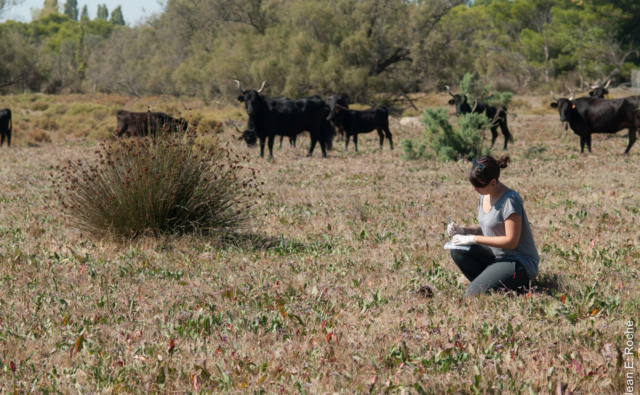In September 2018, decompaction operations were completed on a several-meter wide, 1.5 km segment of a hard clay road that was ploughed up and returned to nature. This operation occurred in the framework of a project to dismantle a high voltage electrical line in the Camargue, which had crossed the Tour du Valat Estate on 20 pylons, 16 of which were located on the Reserve (find out more).
This clay road, which was no longer considered to be a priority, ran through the Cerisières temporary pond in the eastern part of the Estate, cutting it in two.
The road was decompacted or ripped to a depth of 50 cm in half a day using a mechanical digger fitted with a special head (see video below). This operation will ensure that the pond’s hydrological functioning is less altered, and enable it to be progressively recolonised by characteristic vegetation.
This operation was completed within the framework of compensatory measures, which will be continued for three years, within the scope of the project to dismantle an overhead high-voltage line by RTE, the French electricity transmission operator.
The ecological impact of this project (the passage of heavy equipment through vegetation) will be measured by Tour du Valat management teams until the end of 2021, as will the evolution of the two artificial ponds that were created where the old pylons used to be located.
This road ripping operation is exemplary, because such a project has rarely been conducted in a natural area in France, especially for such a large area. It will enable our team to conduct on-site experiments on the spontaneous renaturalising processes that occur in natural Mediterranean habitats, particularly after human interventions.


